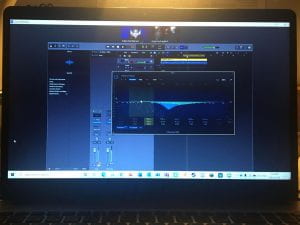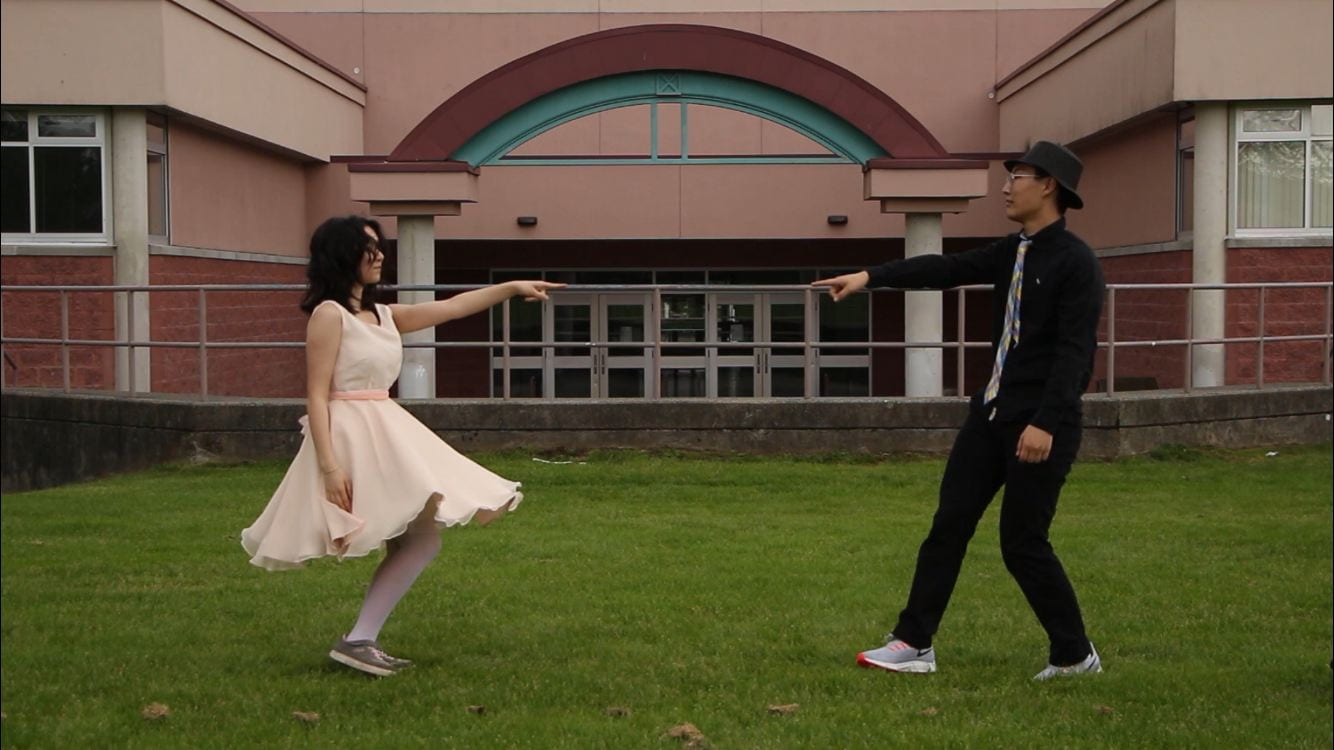Eminent
Eminent Speech | Eminent Research
My Eminent project consisted of a 5-minute speech about a person who I think is truly eminent. On Night of the Notables, (November 27th, 2019) I set up a learning center themed around my eminent person. My eminent person was Marilyn Monroe, and my display contained a red velvet tablecloth and carpet, cardboard film reels, a trifold with pictures of Marilyn Monroe and text describing how she was eminent, and a book on Marilyn Monroe. I dressed up as a ‘camera’ because the point of view of my speech was the camera that shot her footage.
2. I tailor my work to appeal to my intended audience and use language and visual design elements appropriate for them.
For my learning center for Night of the Notables, I made a sort of 3D experience by having a red carpet that stretched out from the table, and red velvet accents on the lockers around my station. I included props such as a camera, film reels, and a book. I dressed up and stayed in character to create a fun and engaging experience for the audience. When presenting my speech, I used expression, tone of voice, hand gestures, and moving around the stage to engage my audience and make my presentation more exciting.
7. I design my work with consideration given to aesthetics and design, such as consistent colours schemes, symmetry or organization of visual elements, and overall layout.
When designing my learning center for Night of the Notables, I made sure to make my trifold pop by putting bright colours on a dark background. I kept a consistent colour scheme of red, orange, and yellow. The red on the trifold matched the red of the velvet carpet and tablecloth, and the yellow represented stage lights or dressing room lights, tying into the theme of Marilyn Monroe and old-style film and theatre. I set up my station so that all of the elements led up to the table, and the film reels created a frame for the centrepiece, the book.
9. I critically assess research sources for Currency, Reliability, Authority, and Purpose
When researching my eminent person for my speech, I make sure that my resources are reliable by checking the citations, assessing the format of the website, and assessing the information itself. I try to pick sources that are accurate and will not contain false information.
15. My work demonstrates a positive, productive, and empathetic worldview
My project shows how Marilyn Monroe positively impacted the world, and how her influence has made the world a better place. I included her struggles and problems, and how she overcame them on the path to success. The point of my project was to inspire others and educate them on how the icons we know today became who they are. I was passionate about working on this project and put a lot of effort into making it worthy of being shared.
13. I attribute credit to ideas that are not my own by preparing a Bibliography/Works Cited and by using in-text citations
I took note of every resource I used to complete this project and assembled it all into a Bibliography. I’ve included my Works Cited in my research document.
PTI Presentations
Truth and Reconciliation Commission PowerPoint
The Truth and Reconciliation Commission project was a presentation I did in a group, as part of a unit learning about First Nations peoples and the struggles and resolutions we’ve made with them over the years. For our presentation, we created a skit of a debate, one side defending the Truth and Reconciliation Commission, another side against it, and one side unaware of what it is.
1. I use digital spaces to plan and execute collaborative projects with my peers
My group and I used PowerPoint and Microsoft Word to collaborate on ideas, research, and to share our script, as well as collaboratively work on the final presentation and slides. We were able to work as a group outside of school by communicating online and using the shared document at home.
10. I identify and discuss bias in research sources
When researching information about the Truth and Reconciliation Commission, we made sure not to use sources that were strongly for or against it. We found sources that purely stated facts about the topic and made our own opinions about it as points for the debate. However, we did not include strong bias in our presentation, but rather bringing up points and sharing about it.
12. I look at controversial issues or topics from opposed perspectives to gain a more complete understanding
We did a bit of research on the different opinions individuals had on the Truth and Reconciliation commission to understand both sides of the debate and share those sides with the class. One side debated that the Truth and Reconciliation Commission was necessary to make up for the damage caused to First Nations peoples in the past, and equity was the way to go about it. Another side defended that Canadian tax money shouldn’t go to the First Nations peoples and should be used to help all Canadians. We incorporated this debate into our skit, while still keeping the presentation unbiased and balanced.
Midsummer Nights Dream Vignettes
Script
The Midsummer Nights Dream Vignette was each scene from Midsummer Nights Dream put on by a different group. Each group had to change something about the scene, such as setting or period. My group decided to make all of the characters different sodas, and the scene took place in a fridge. We had to act out the scene with blocking and costumes, changing most lines in the script, but keeping some of the originals.
2. I respond to the work or ideas of my peers in a way that is compassionate and productive
As a group project, all of my team members had ideas and suggestions to add to the table. I made sure to listen to everyone’s input and consider all of our options when making final decisions with the group. I approached each meeting with a positive attitude and helped out my group members when they needed help. I also tried to ensure that my team stayed on track if we ever started to lose productivity. In response to my respect, my team members also listen to my ideas, and we worked effectively as a group.
4. I constantly build upon or synthesize the ideas of my peers
My groupmates always came up with new ideas, and I made sure to consider all of them. Many times, I would add to their ideas with my own, making an even better solution than before. For example, one of my team members had the idea of changing the names of all our characters to food items. From that, I got the idea to change all the character names to soda brands. We ended up all agreeing to that idea and used it for our final presentation. My team members also added to my ideas many times, and this collaboration made for a very fun and interesting skit.
Reproduction of an Organism: Common Dandelion
Research Notes
The Reproduction of an Organism project was a research-based project where we were given an organism to study and create a poster on how it reproduces. I got the Common Dandelion and presented my learning by drawing a diagram and labelling it with the different stages of reproduction.
11. I go beyond google and use databases to find scholarly research sources
When researching my part of the cell (the cell membrane) I made sure to look past articles and google and used textbooks and professional websites and resources to get my information.
7. I design my work with consideration given to aesthetics and design, such as consistent colours schemes, symmetry or organization of visual elements, and overall layout.
My final product contained a drawing of a Dandelion in the center, with smaller drawings of each stage of the dandelion around it. Each stage also contained a blurb of text explaining that stage of the dandelion reproduction system. The design was symmetrical and easy to follow along with, and the order was clean and equal between stages. I fine-lined the final product as well, to make the drawing and text pop and so the final poster seemed clean and finished.
DMA Animated Intro (flash)
Into Video
My Digital Media Arts Animated Intro was a short animation I created for myself using Adobe flash. I included an audio file for background music, hand animation frame by frame, and motion tweens.
8. I challenge myself to increase my technological literacy by working with apps, software, or mediums that I have not used in the past.
Adobe flash was a program I was not familiar with before working on this project. I learned about creating shapes and drawing in the program, how to insert music, how to code buttons and other functions, and how to create symbols. After learning all of these concepts I was able to assemble my animated intro using the skills I had learned. I challenged myself to create a complex product with many layers and pieces to it, and I discovered shortcuts and other skills in the process of making this animation.
6. I determine and use the most effective medium to present my work
The medium I used to create this product was determined for me, however, I determined how to use this program to complete my work. Hand-drawn animation frame by frame and motion tweens are two ways to make an object move. I could have also drawn my animation in flash or premade backgrounds and symbols in Adobe Photoshop. I determined the best way to accomplish the end product I wanted to achieve and followed through using certain programs and ways of animating to achieve that product.

